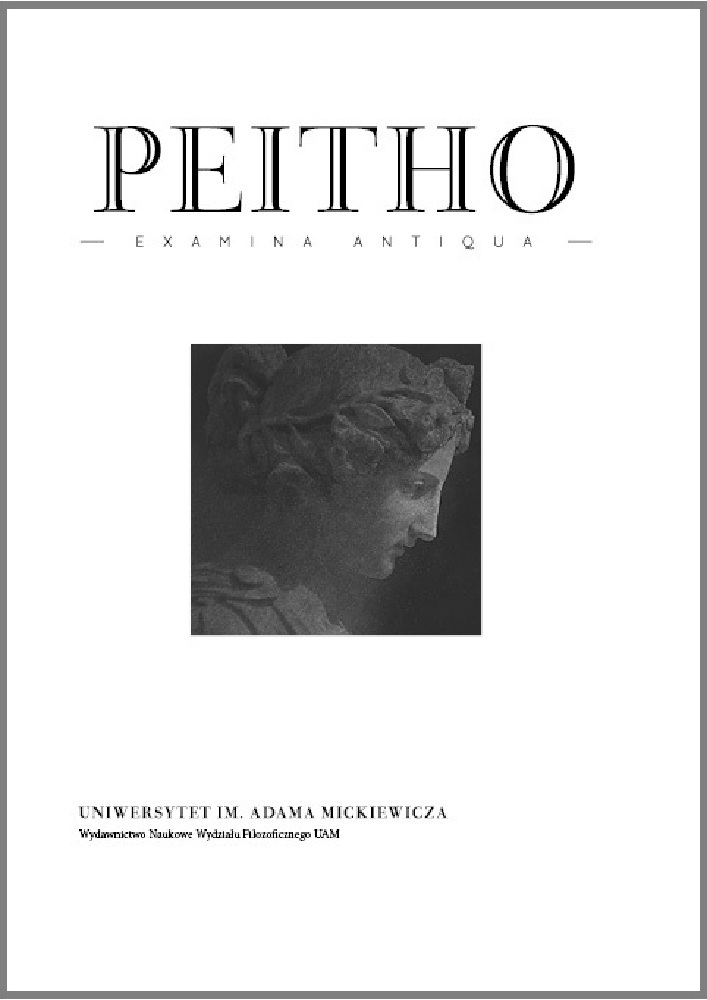Abstract
In the story of Coriolanus, as depicted mainly by Plutarch and Shakespeare, we become aware of the norms and parameters of the nobility, the sincerity and the legitimacy of violence, both in diction and action, both political and personal, both as a rhetorical strategy and as a way of living. These attributes indicate a firm culture of violence and a definite system of values, which, within the span of Roman antiquity and history, comprises an early idea of chivalry and which aims at gloria.
References
Adorno, T., 1994, The Stars down to Earth and Other Essays in the Irrational in Culture, S. Crook (ed.), London.
Beam, J.N., 1918, Hermann Kirchner‘s Coriolanus, PMLA 33 [2], p. 269–301.
Bekker, P.J., 1932, Beethoven, London.
Brecht, B., 2009, Coriolanus, London.
Cavell, S., 1983, “»Who Does the Wolf love?« Reading Coriolanus,” Representations 3, pp. 1–20.
Grass, G., 1966, Die Plebejer proben den Aufstand. Ein deutsches Trauerspiel, Berlin.
Greenblatt, S., 1980, Renaissance Self-fashioning. From More to Shakespeare, London.
Hunt, M., 1991, “»Violents᾽t« Complementarity: The Double Warriors of Coriolanus,” Studies in English Literature, 1500–1900 31 [2], pp. 309–325.
Jacoby, K., 1885–1905, Dionysii Halicarnasei Antiquitatum Romanarum Quae Supersunt, Leipzig.
Kassel, R., 1965, Aristotelis de arte poetica liber, Oxford.
Kermode, F., 2009, Shakespeare’s Language, London.
Kramer, A., 1995, “The Strange Case of Beethoven’s Coriolan. Romantic Aesthetics, Modern Subjectivity, and the Cult of Shakespeare,” The Musical Quarterly 79 [2], pp. 256–280.
Lees, F.N., 1950, “Coriolanus, Aristotle, and Bacon,” The Review of English Studies 1 [2], pp. 114–125.
Lehman, A.D., 1952, “The Coriolanus Story in Antiquity,” The Classical Journal, 47 [8], pp. 329–336.
Leithart P.J., 2006, “City of in-gratia: Roman ingratitude in Shakespeare’s Coriolanus,” Literature & Theology 20 [4], pp. 341–360.
MacKay, L.A., 1962, “Antigone, Coriolanus and Hegel,” Transactions and Proceedings of the American Philological Association 93, pp. 166–174.
McAlindon, T., 1993, “Coriolanus: An Essentialist Tragedy,” The Review of English Studies 44 [176], Nov. 1993, pp. 502–520.
Mendl, R.W.S., 1928, “Beethoven as a Writer of Programme Music,” The Musical Quarterly 14 [2], pp. 172–177.
Montaigne, M.E. de, 1952, The Essays, W. Benton (ed.), London.
Plotz, J., 1996, “Coriolanus and the Failure of Performatives,” English Literary History 63 [4], pp. 709–732.
Proser, M., 1963, “Coriolanus The Constant Warrior and the State,” College English 24 [7], pp. 507–512.
Rackin, P., 1983, “«Coriolanus»: Shakespeare’s Anatomy of «Virtus»”, Modern Language Studies 13 [2], pp. 68–79.
Russell, D.A., 1963, “Plutarch’s Life of Coriolanus,” The Journal of Roman Studies 53, pp. 21–28.
Salmon, E.T., 1930, “Historical Elements in the History of Coriolanus,” The Classical Quarterly, 24 [2], pp. 96–101.
Shakespeare, W., 2008, The Tragedy of Coriolanus, R.B. Parker (ed.), Oxford.
Wagner, R., 1914, “Ouvertüre zu Coriolan”, in: R. Wagner, Gesammelte Schriften, vol. 9, Leipzig.
Wells, R.H., 2000, “Manhood and Chevalrie: Coriolanus, Prince Henry, and the Chivalric Revival,” The Review of English Studies, 51 [203], pp. 395–422.
Winter, K. de, 2012, The political awareness of the plebeians in Coriolanus, Amazon Digital Services.
Zapata, E., 1972, “Whose Violence?,” Black Flag 1 [8] (reproduced in the Bulletin of the Kate Sharpley Library 10 [2001]).
Ziegler, K., 19643, Plutarchi Vitae Parallelae, vol. 1.2, Leipzig.
License
Peitho provides immediate open access to its content on the principle that making research freely available to the public supports a greater global exchange of knowledge.
